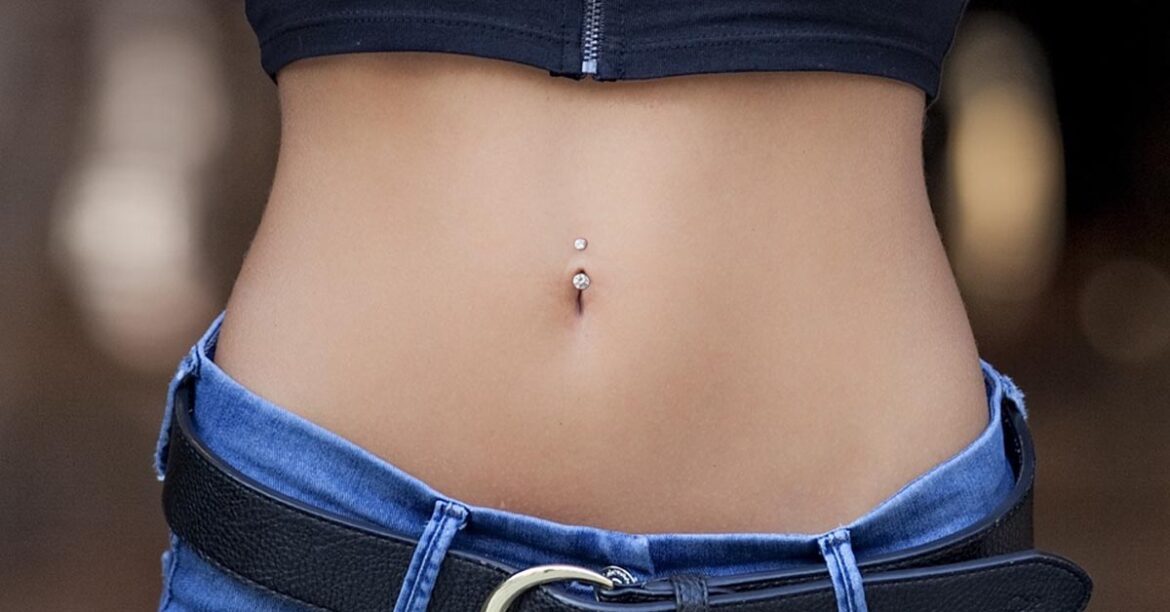What Is Navel Piercing?
A navel piercing is an aesthetic body piercing that curves through the belly button.
The belly button is located in the navel, a small indentation in the center of the abdomen.
Most piercings are done through the skin of the navel and the topmost part of the belly button.
A navel piercing can also be seen as an alternative to a belly button piercing,
which is usually done when a woman’s belly button is already protruding too much.
Although it has a specific name and a specific place, it’s also often associated with any other form of belly button piercing that is not done on the navel.
The navel piercing is common among women in some regions of the world.
The History of navel piercing
In ancient times, navel piercing was a practice that was generally reserved for aristocratic women.
In fact, the idea of piercing the navel was first documented in the ancient Hindu text, the Rig Veda.
There are documented reference of the practice dates back to ancient Egypt, as early as 3000 BC.
There It is also known as the “magic knot”.
The navel piercing is thought to be a symbol of the umbilical cord, which is often pierced in ancient Egyptian hieroglyphics, and is also known as the scarab, or scarabaeus, beetle.
The practice of navel piercing continued in ancient times, and was recorded as far back as 18th century BC.
In ancient Greek, the practice was referred to as “navel-placement”, while in ancient Roman times, it was called “navel-insertion”.
However, the practice of navel piercing did not become widespread until the Victorian era, when it was part of the fashionable trend at the time.
The practice of navel piercing actually peaked in 1890s Paris, where it was said that a woman’s chances of marriage were increased if she had two pierced navels.
How Painful Is Navel Piercing?
Navel piercing is a painful experience, but it’s not as bad as you might think.
In fact, most people say the pain is similar to a bee sting or a papercut.
Some people have also described it as similar to a hot bench press.
The pain level is usually not too bad, but it can vary depending on the person and the type of navel piercing.
There is a range of pain from mild to moderate, with the majority of people feeling mild pain.
What are the Risks and Complications of navel piercing?
One of the most common risks associated with navel piercings is infection.
This can be due to several factors, such as using unclean equipment or piercing in an unclean environment.
Infections can also occur if the piercing is not cared for properly after it is done. Bacteria and other organisms can easily get
trapped under the skin and cause an infection.
Another risk associated with navel piercings is scarring.
This can occur if the piercing is not done correctly, or if it becomes infected. Scarring can also occur if the jewelry isremoved before the piercing has healed completely.
Finally, there is a small risk of nerve damage when getting a navel piercing.
This is because the needles used to pierce the skin can damage the nerves in the area. This nerve damage is usually not
permanent, but it can cause some pain and numbness in the affected area.
Overall, navel piercings are relatively safe, but there are still some risks associated with them. These risks can be minimized
by choosing a reputable piercer and taking care of the piercing properly
Procedure
1. Clean the navel and surrounding area with mild soap and water. Pat the area dry.
2. Place the mark where you want the piercing. Use a pen or a sterile marker to make a small dot on the skin.
3. Put on gloves. It’s important to wear gloves to minimize the risk of infection.
4. Insert the needle into the skin. Push the needle through the skin at a 90-degree angle.
5. Insert the jewelry. Use forceps to put the jewelry through the newly pierced hole.
6. Clean the piercing daily. Gently clean the area with mild soap and water. Pat the area dry.
7. Remove the jewelry if you experience any pain, redness, swelling, or discharge. See a doctor if these symptoms persist.
Healing Time & Aftercare
Healing time of navel piercing can take as long as six weeks.
So, in the meantime, make sure that you are not doing anything that will hurt the piercing.
It is important to keep the piercing clean and dry.
This means that you should clean it with a saltwater solution every day, and it should be allowed to breathe.
Otherwise, it might get infected.
It is also important to avoid contact with any dirty surfaces and not to fiddle with the piercing.
What Type Of Jewelry Can I Wear?
The type of jewelry that can be worn for a navel piercing varies.
Some of the most common types of jewelry include rings, hoops, stud, straight barbell and bars.
It is important to make sure that the jewelry is made of high-quality materials and is properly sized,
so as not to cause any irritation or infection.
How Much Does It Cost ?
A navel piercing can cost anywhere from $20 to $100,
depending on the jewelry you choose and the location of the piercing.
The most popular type of jewelry for a navel piercings is a ring, which typically costs between $20 and $30.
If you want a barbell or other type of jewelry instead of a ring, expect to pay more – anywhere from $40 to $100.
To Sum Up…
Navel piercings are a popular form of body modification.
They can be fun and decorative.
However, they do come with some risks, so it is important to be aware of these before getting pierced.
If you are considering getting a navel piercing, make sure to research the process and find a reputable piercer.

